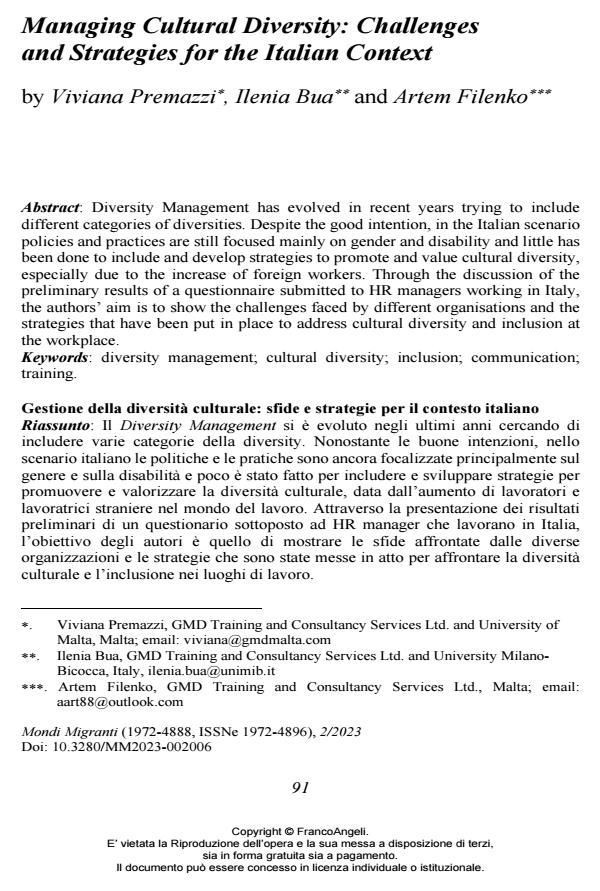Managing Cultural Diversity: Challenges and Strategies for the Italian Context
Titolo Rivista MONDI MIGRANTI
Autori/Curatori Viviana Premazzi, Ilenia Bua, Artem Filenko
Anno di pubblicazione 2023 Fascicolo 2023/2
Lingua Inglese Numero pagine 16 P. 91-106 Dimensione file 207 KB
DOI 10.3280/MM2023-002006
Il DOI è il codice a barre della proprietà intellettuale: per saperne di più
clicca qui
Qui sotto puoi vedere in anteprima la prima pagina di questo articolo.
Se questo articolo ti interessa, lo puoi acquistare (e scaricare in formato pdf) seguendo le facili indicazioni per acquistare il download credit. Acquista Download Credits per scaricare questo Articolo in formato PDF

FrancoAngeli è membro della Publishers International Linking Association, Inc (PILA)associazione indipendente e non profit per facilitare (attraverso i servizi tecnologici implementati da CrossRef.org) l’accesso degli studiosi ai contenuti digitali nelle pubblicazioni professionali e scientifiche
Diversity Management has evolved in recent years trying to include different categories of diversities. Despite the good intention, in the Italian scenario policies and practices are still focused mainly on gender and disability and little has been done to include and develop strategies to promote and value cultural diversity, especially due to the increase of foreign workers. Through the discussion of the preliminary results of a questionnaire submitted to HR managers working in Italy, the authors’ aim is to show the challenges faced by different organisations and the strategies that have been put in place to address cultural diversity and inclusion at the workplace.
Il Diversity Management si è evoluto negli ultimi anni cercando di includere varie categorie della diversity. Nonostante le buone intenzioni, nello scenario italiano le politiche e le pratiche sono ancora focalizzate principalmente sul genere e sulla disabilità e poco è stato fatto per includere e sviluppare strategie per promuovere e valorizzare la diversità culturale, data dall’aumento di lavoratori e lavoratrici straniere nel mondo del lavoro. Attraverso la presentazione dei risultati preliminari di un questionario sottoposto ad HR manager che lavorano in Italia, l’obiettivo degli autori è quello di mostrare le sfide affrontate dalle diverse organizzazioni e le strategie che sono state messe in atto per affrontare la diversità culturale e l’inclusione nei luoghi di lavoro.
Parole chiave:Diversity Management; diversità culturale; inclusione; comunicazione; formazione.
Viviana Premazzi, Ilenia Bua, Artem Filenko, Managing Cultural Diversity: Challenges and Strategies for the Italian Context in "MONDI MIGRANTI" 2/2023, pp 91-106, DOI: 10.3280/MM2023-002006